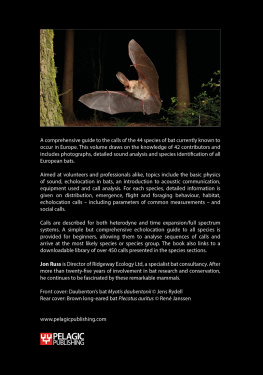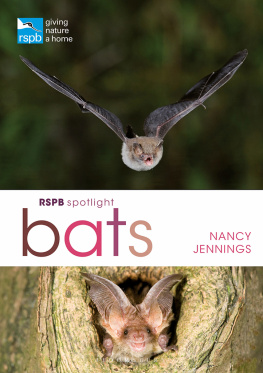


Cover and book design by Lora Westberg
Edited by Brett Ortler
Cover images: Pallid Bat, front cover by All Canada Photos/Alamy Stock Photo/Jared Hobbs; Basileus/shutterstock.com: stone background
back cover by kyslynskahal/shutterstock.com
Photo credits:
All photos copyright of their respective photographers.
David Arbour:
Used under license from Shutterstock.com :
Archbob:
The range maps are inspired by data from Bat Conservation International, except Rafinesques Big-Eared Bat is based on a map from Bats of the United States ; Michael J. Harvey, J. Scott Altenbach, Troy L. Best. Arkansas Game & Fish Department.
10 9 8 7 6 5 4 3 2 1
Bat Basics: How to Understand and Help These Amazing Flying Mammals
Copyright 2019 by Karen Krebbs
Published by Adventure Publications
An imprint of AdventureKEEN
330 Garfield Street South
Cambridge, Minnesota 55008
(800) 678-7006
www.adventurepublications.net
All rights reserved
Printed in China
ISBN 978-1-59193-843-9 (pbk.); ISBN 978-1-59193-844-6 (ebook)
DEDICATION
This book is dedicated to Kristy K. Mink who left us too soon but will always live in our hearts.

TABLE OF CONTENTS
INTRODUCTION
Imagine that you can fly. Now, imagine that you are flying at night, through a forest, a desert, an urban area, or above a mountain ridge, and that youre flying without using your eyes! Bats do exactly that! Bats see with their ears. They do this by echolocationa biological system that has a lot in common with the sonar found on submarines. Just as subs send pings of sound to detect other vessels, bats emit special clicks from their mouth and use the reflected sound to gain information about their surroundings. This natural sonar enables bats to maneuver, even in total darkness or crowded caves, and it also provides them with vital information about their prey! Better yet, all of this vital information is gained within milliseconds and tells the bat what to do next.
There are 45 species of bats found in the United States. All of them are amazing flying mammals that have special adaptations and abilities that help them survive. They are a crucial part of many different ecosystems, and they provide people with many benefits. For example, they pollinate plants, disperse seeds, and devour millions of insects.
Despite the many ways that bats benefit people, theyve been feared and misunderstood for years, and this has led people to persecute bats and even attempt to destroy entire bat populations. Many of the misconceptions that people have about bats are due to superstitions and myths. Bats certainly are nowhere near the threat theyre claimed to be.
Join me as we learn what bats are really like. Along the way, youll experience a bit of what its like to be a bat. See what bats see (with their ears), taste what they eat, sleep where they roost, fly with ease, and spy on their family life. Youll also learn about the many threats to batsand how you can help. Bats have an incredible story to tell, and you wont be disappointed in what you learn.

big brown bat

Bat Evolution & Importance
Bats are the worlds only flying mammals. In popular culture, bats are often shrouded in mystery, so perhaps its fitting that their evolutionary lineage is also quite enigmatic. While scientists may not yet know the full story behind their family tree, their importance to the natural environmentand to humansis undeniable.
Bats serve as pollinators, inspire technological advances, and, perhaps most importantly, play an incredibly important role as insect predators. Along the way, they help out farmers (who might otherwise have to use chemical controls for the bugs) and everyday folks, who can enjoy summer evenings with far fewer mosquitoes.
WHAT ARE BATS?
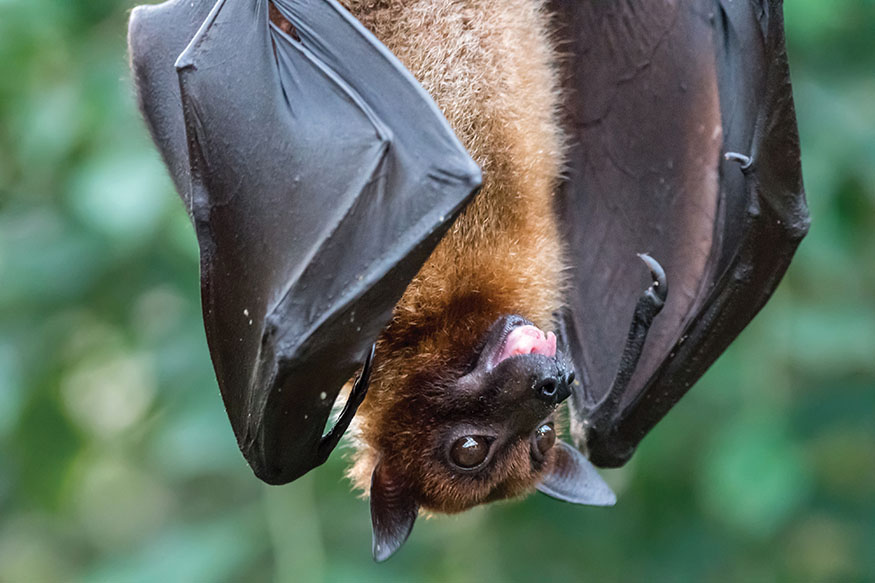
A fruit bat belonging to Megachiroptera
Bats are mammals, but even though they are often described as flying mice, they arent closely related to rodents at all. Instead, they belong to their own order of animals, Chiroptera (pronounced Ki-rop-ter-uh).
There are two main groups of bats, the Megachiroptera (which, roughly translated, means big bats) and the Microchiroptera (which means small bats or microbats). As you might expect, bats that belong to Megachiroptera are much larger, and they mainly eat fruit or nectar; they are found in tropical regions of Africa, India, Asia, and Australia. They also dont often echolocate (use sounds to see). Instead, they have very large eyes, enabling them to see well.
Bats belonging to Microchiroptera are found in many places, including North America. All bats found in North America belong to Microchiroptera. These microbats, as they are sometimes called, are what most people think of when they think of bats: small, fast animals that use echolocation to see and to track down prey.
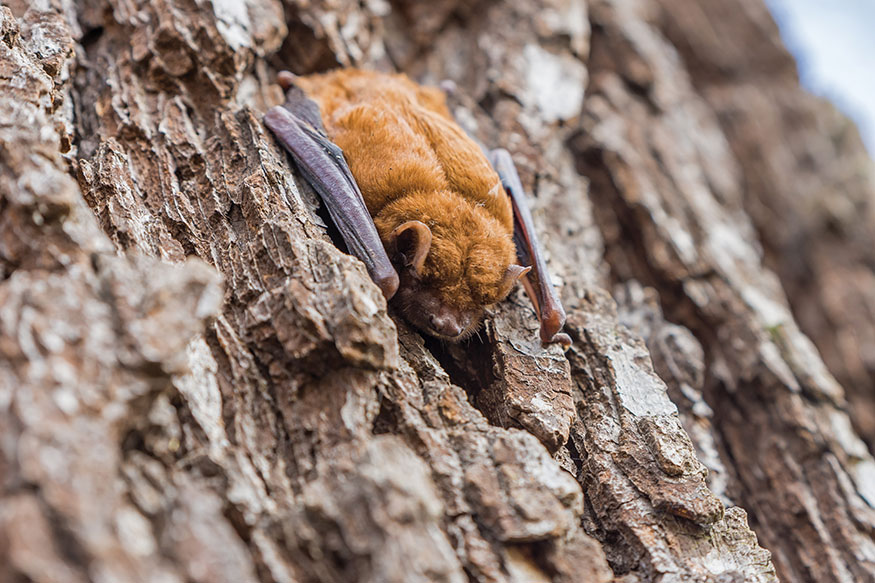
An insectivorous bat belonging to Microchiroptera
With the exception of the polar regions and some isolated islands, bats are found nearly everywhere. Highly adaptable and able to fill ecological niches, today there are more than 1,300 bat species found worldwide, with 45 species normally found in the United States and a few more that show up on occasion or accidentally.
BAT FOSSILS AND BAT EVOLUTION
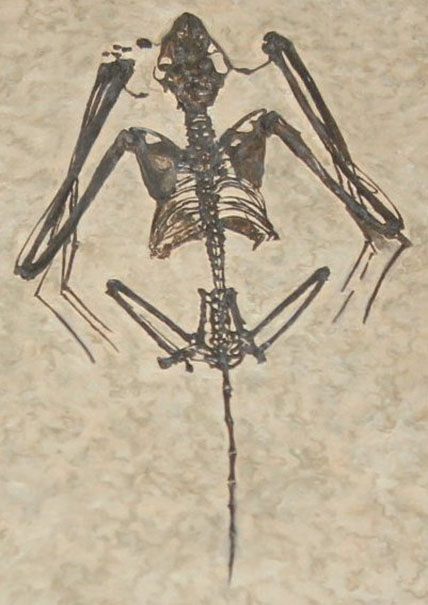
Bat fossil
Bats are small, fragile creatures, so fossil evidence for bats is rare. Thanks to a few famous finds, however, fossil evidence for bats extends back almost 60 million years. In the 1960s, a small, but complete, bat fossil was found in Wyoming just south of Yellowstone National Park. Many earlier bat fossils were incomplete, but a rare few, like the one found in Wyoming, are well preserved and very similar to modern bats. These complete fossil specimens show bats that look very similar to bats today, with wings that consist of elongated hand and finger bones and ears adapted for echolocation.
In terms of their evolutionary family tree, bats are related to primates, and one popular theory holds that bats closest relatives are small, arboreal insectivores that could glide, but the idea is not shared by all scientists. However they evolved, it seems bats adapted into their modern form relatively quickly and have changed little since then.
BATS TODAY
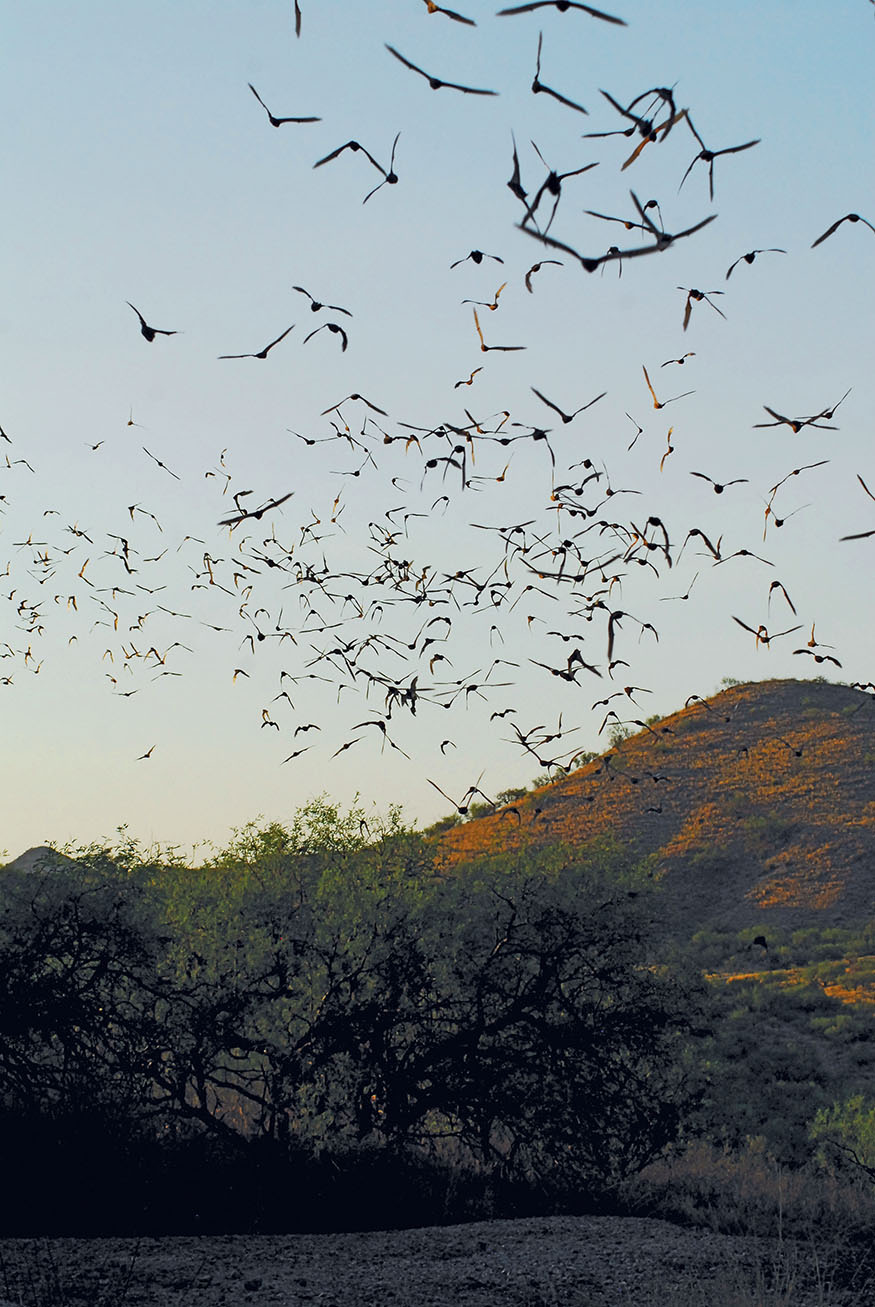
Next page




